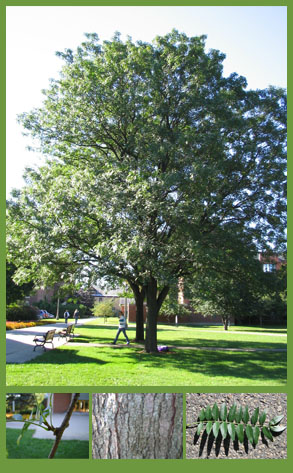Class: Magnoliophyta
Origin: Fabales
Family: Fabaceae
The honey locust is a fast growing tree that has a natural range that covers extreme southern Ontario, Michigan, Wisconsin, Nebraska to Texas, and Florida. It can live on average up to 125 years and will grow to a height of about 15-30 meters. It has compound leaves with 24-30 alternate, pinnately arranged leaflets per rachis that spread out and allow for shade. The tree has a minimum seed bearing age of ten and has very large fruit pods (20-40cm) that produce ethanol and are eaten by many animals. The bark of the honey locust is brown and is 0.6-3.5cm thick, with many fissures that allow the bark to be peeled in strips. The roots are thick and fibrous and they run deep and spread out, allowing the tree to act as a windbreak and prevent soil erosion.
The honey locust is extremely intolerant to shade and usually grows on the outskirts of the forest where the sun can reach it, so it is only a minor component of the overall forest stand. Trees found in the wild have many large thorns for protection, however, these thorns have been selectively bred out of the tree for use as an ornamental. The spreading of the canopy and the compound leaves allow for a great amount of shade that is desirable to have in warm, sunny areas. The tree is also used as food for livestock such as cattle, as the fruits have a high content of protein that is beneficial to the animals. Lastly, there is current research being done on the possibility of using the ethanol produced by the fruit pods as a biomass fuel.
Back |
 |